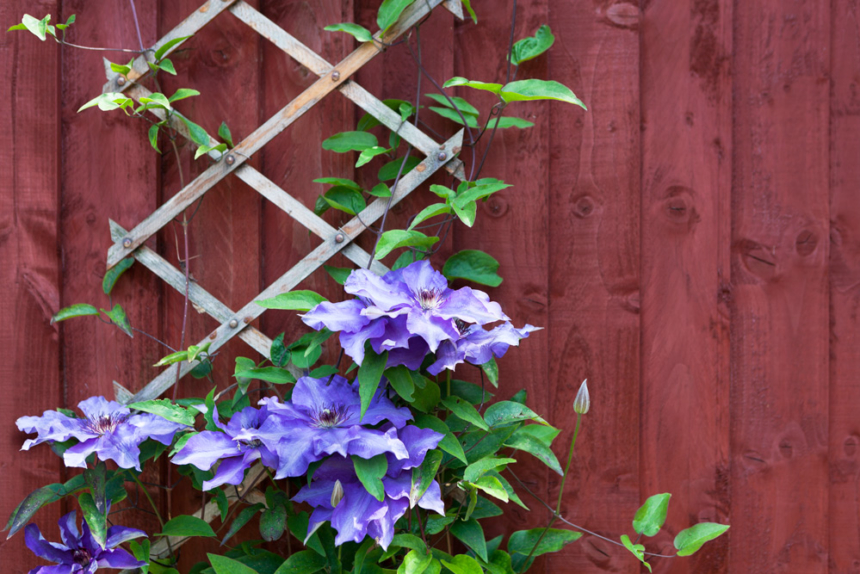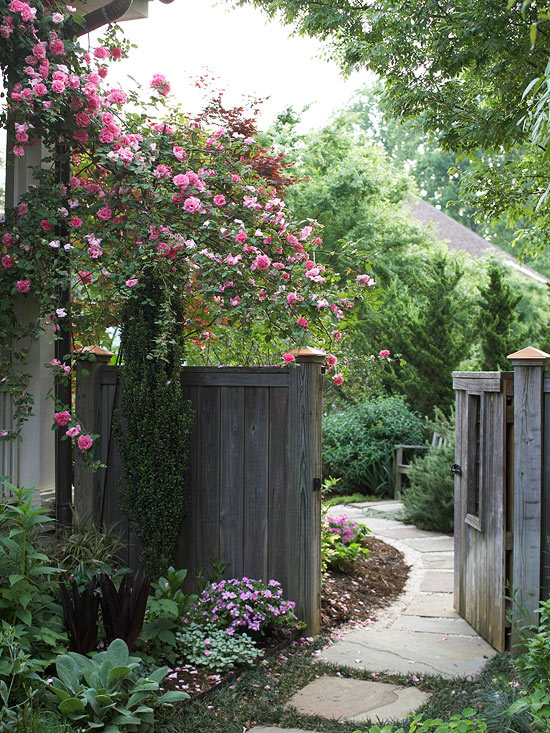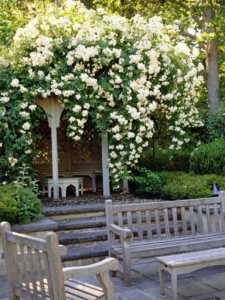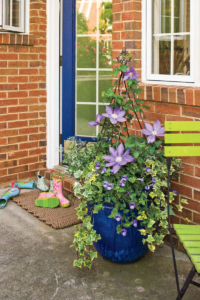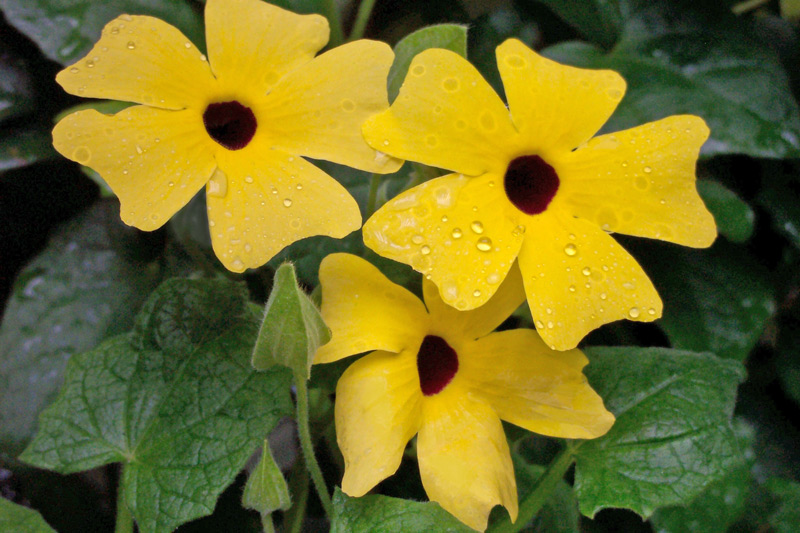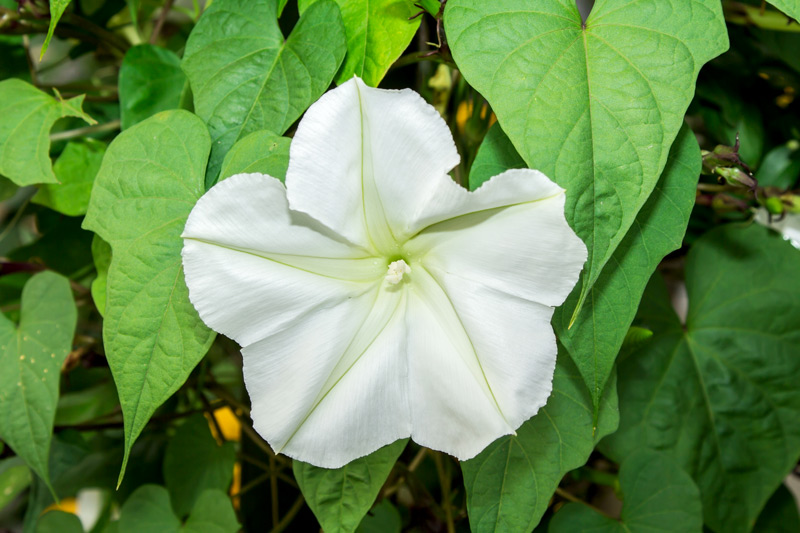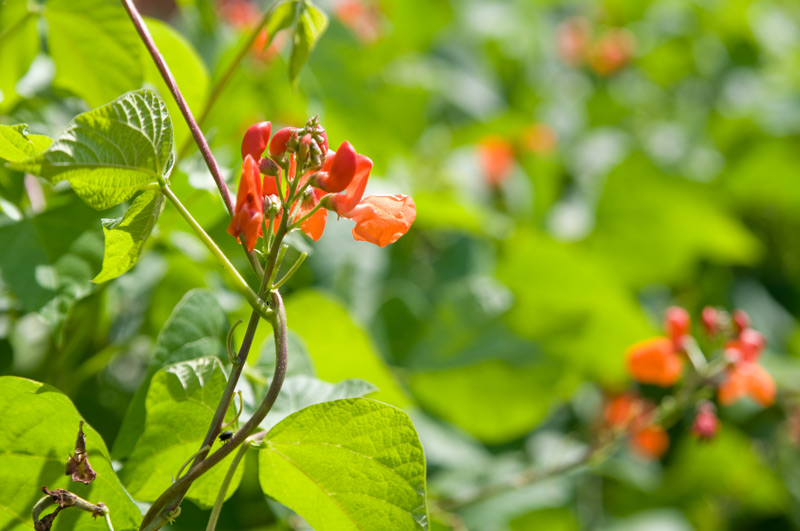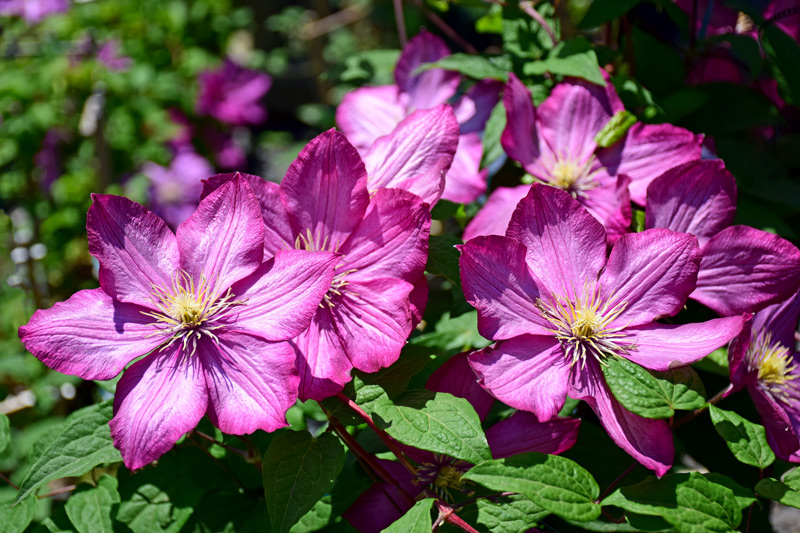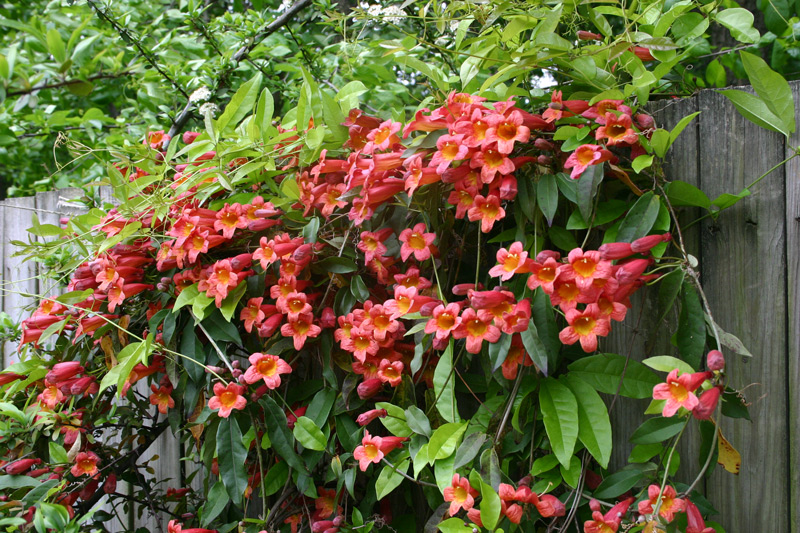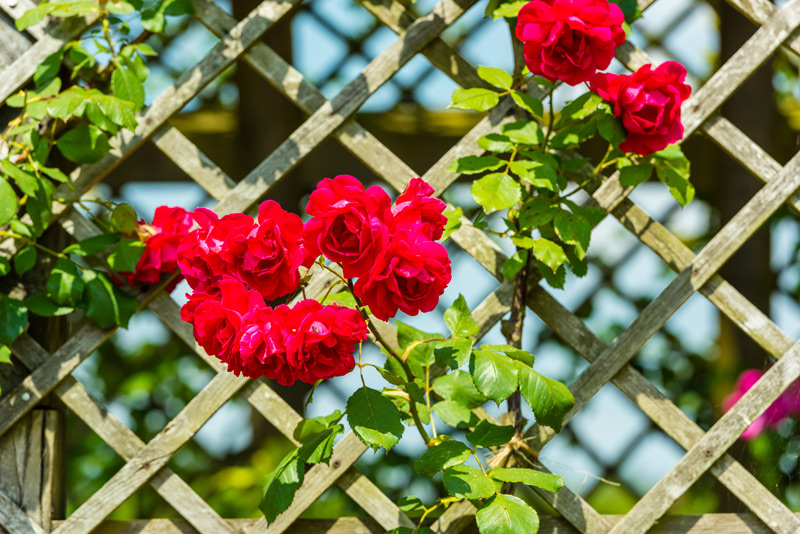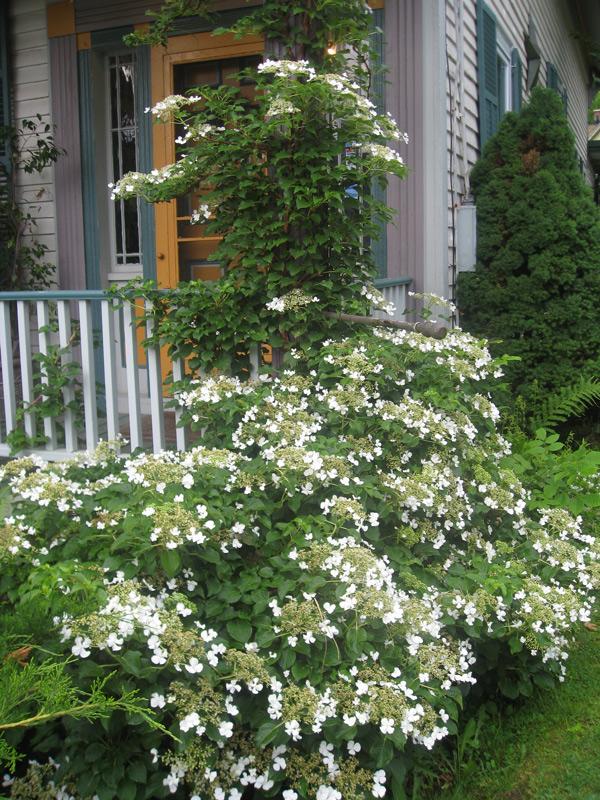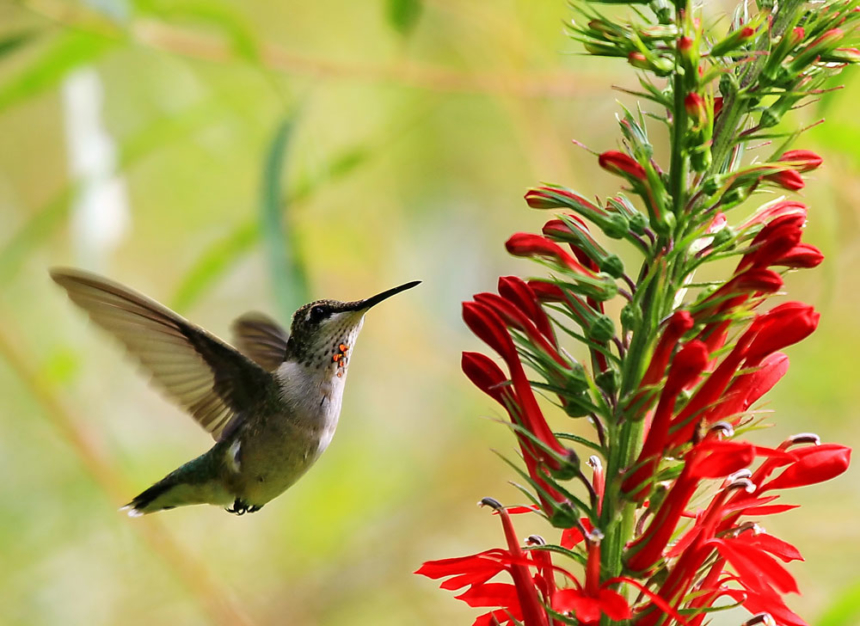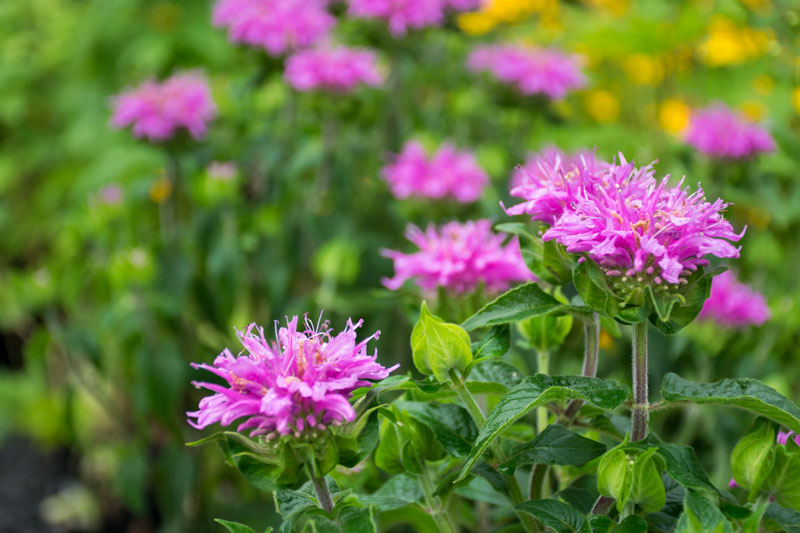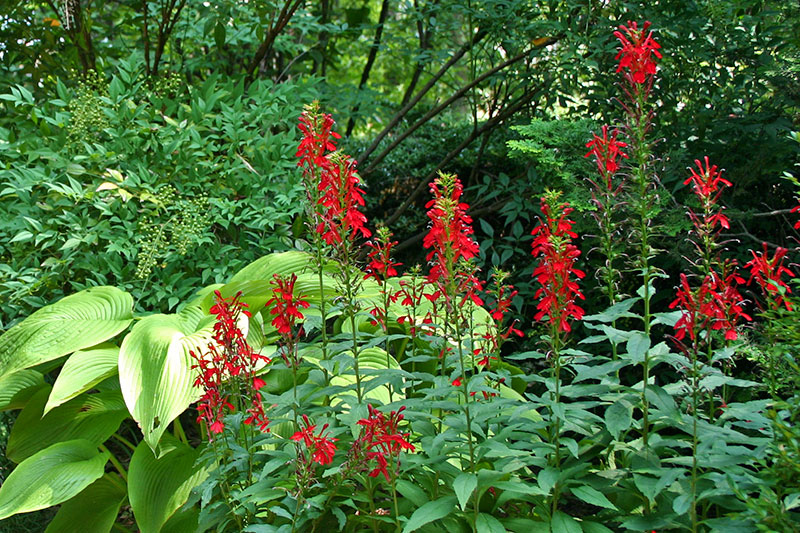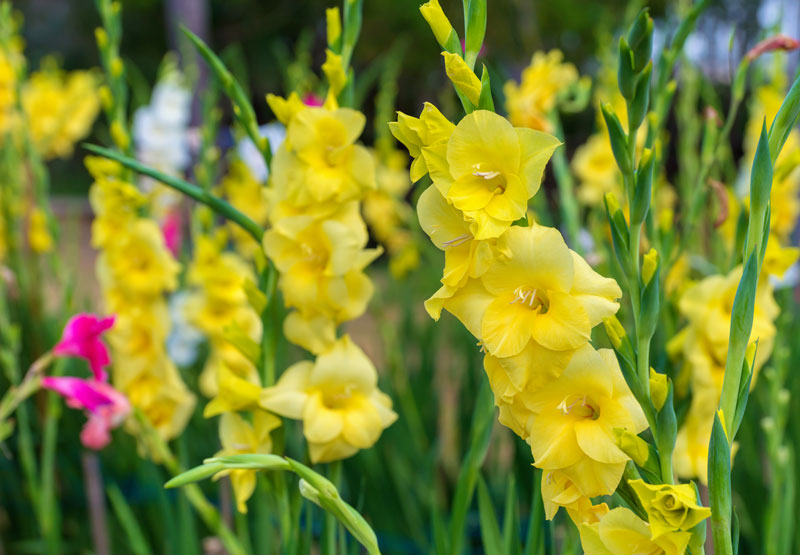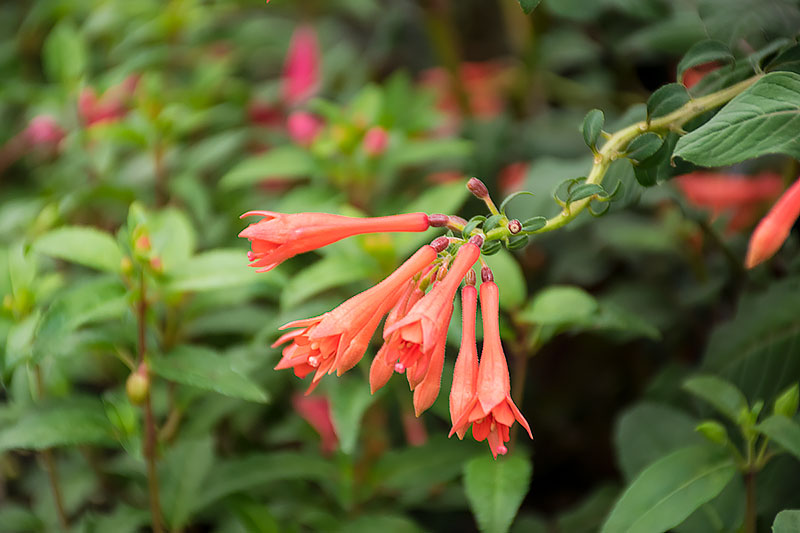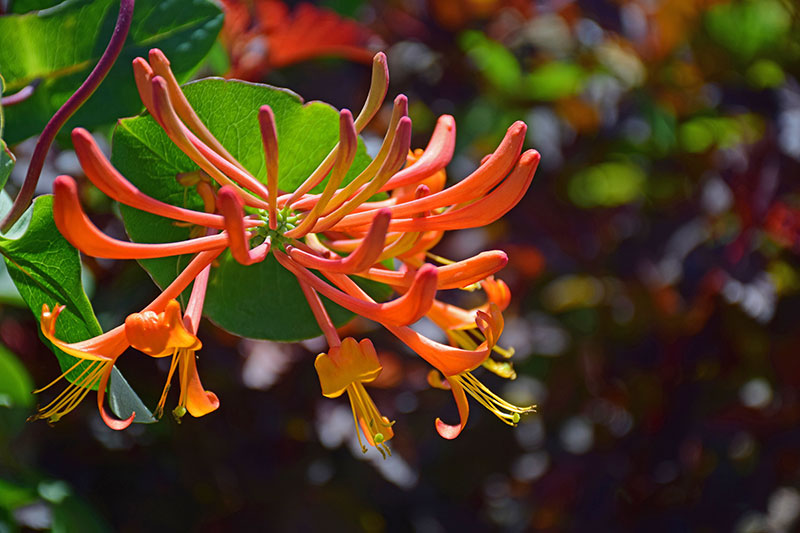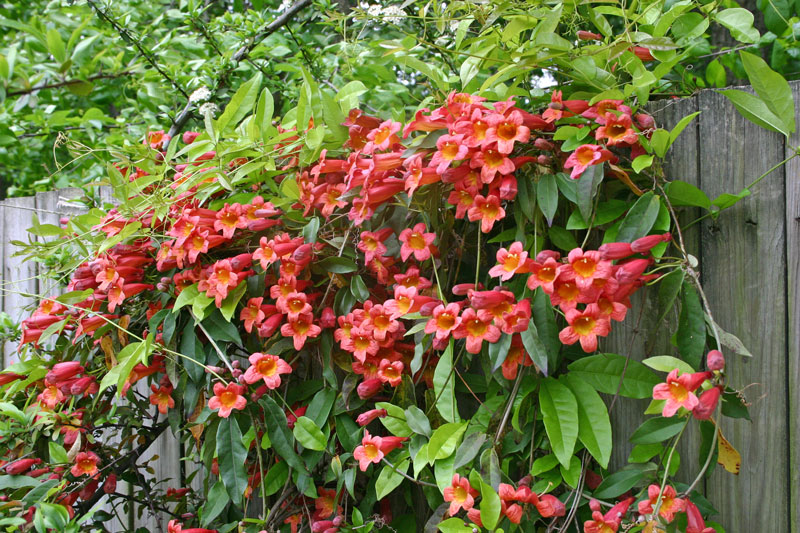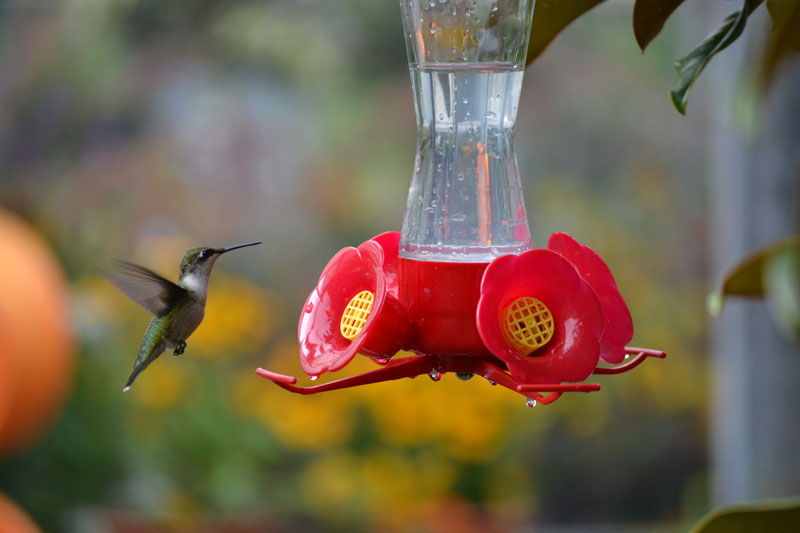Using Climbing Plants in Your Garden
David Yost & Peg Bier, Merrifield Plant Specialists
Elegant, vibrant, cheery, or unique, many people are unaware of the vast number of beautiful flowering vines which can be incorporated into landscapes for a fun twist on standard flowers, shrubs, and landscape features such as fences and pergolas. There are many ways to use climbing flowers in a landscape or garden!
Screens
Allow your climbing plants to screen unsightly views or provide privacy by giving them a trellis to climb in the desired location. Whether it’s your AC unit, an unattractive fence, or even the neighboring town house, climbers can be used as effective tools to replace a not so pleasant view with a beautiful one and create a private space in even the smallest garden.
(Source: Better Homes & Gardens)
Shade
Train your climbing plants over a pergola or arbor to provide shade and create a cool oasis in your garden during the summer months. A number of climbing flowers offer delightful fragrance during parts of the year, some are evergreen, and others are deciduous, so consider which options might work best for you when choosing which vine to grow.
(Source: HGTV)
Decoration or specimen plant
Grow these plants just because you love them! There are many types of structures for your plants to grow over, and some can be trained to grow as trees or shrubs. Plant your climbing flowers in the ground, or in a container on your patio – place a trellis in the container or just let the vines trail.
(Source: Southern Living)
Groundcover
Try planting your vines without a place to climb and watch them spread out over the ground instead. Using vines as groundcover makes an excellent alternative to grass or mulch, and prevents weeds from growing.
Annuals
Black-eyed Susan (Thunbergia)
Try growing cheery Black-eyed Susan in a container, letting the vines spill over the edges, or let it climb on a lattice, a link fence, old tree stump, walls, or even a mailbox. This flower is easily recognizable by its bold orange or yellow flowers with a brown center.
Moonflower Vine
Moonflower vine’s large, elegant white or purple blooms are unique – they open as the sun goes down, providing a show in the gardens of people who enjoy spending time outside in the evening. Consider pairing with morning glories in a garden bed or container for blooms in both the day time and at night.
Morning Glory
True to their name, morning glory’s flowers open in a fantastic display with the morning sun. The trumpet shaped blooms of morning glory come in a variety of colors including pink, purple-blue, magenta or white.
Scarlet Runner Bean
Scarlet Runner Bean’s clusters of vibrant red blooms make this plant a showstopper from July through October. As a bonus, the beans are edible and can be lightly steamed, salted, or dried.
Perennials
Clematis
Clematis comes in an array of bloom colors and bloom seasons. Grow these flexible climbers over a trellis, try using them as groundcover or pair them with another climber. They will easily thread their way up the branches of a climbing rose or other plant!
Woody Vines
Bignonia
Also known as crossvine, this native vine features showy trumpet shaped flowers in shades of orange and red. These spring bloomers easily cling to fences, walls and trees and are known to attract hummingbirds.
Honeysuckle
A popular plant among people and pollinators alike, honeysuckle is known for its fragrance, sweet nectar and bright tubular flowers. This plant comes in many varieties and several are native!
Roses
While not technically a vine, climbing roses can be trained to climb and sprawl out across nearly any garden structure, providing beauty and fragrance. This iconic flower makes a great addition to arbors, pergolas, or trellises in any garden.
Climbing Hydrangea
Climbing hydrangeas have fragrant, lacy white flowers and bright green foliage. Consider using climbing hydrangea as a screening plant to replace unsightly views with their lovely foliage and blooms.


